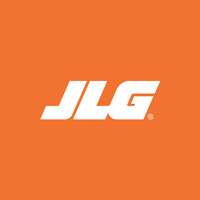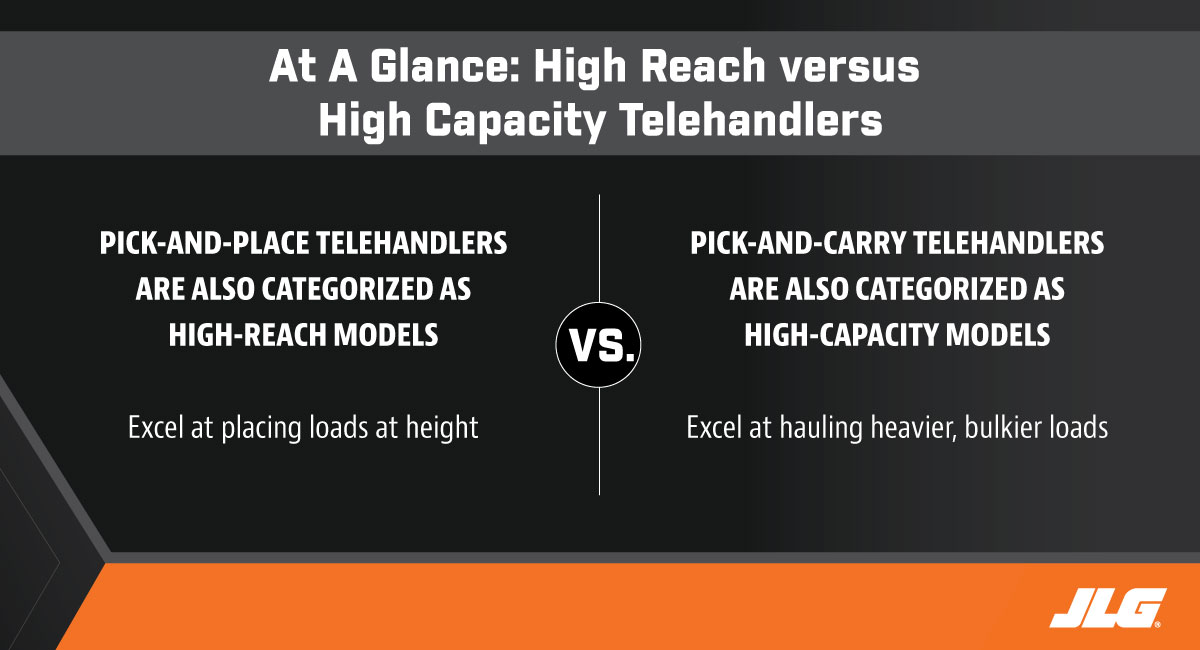 John Boehme
John Boehme
Senior Product Manager - Telehandlers
____
JLG Industries
Because different jobsites require different machine capabilities, telescopic handlers — or telehandlers as these machines are commonly known — come in a wide range of sizes and lifting capacities, including high-reach and high-capacity models.
With so many options to choose from, how do you know which telehandler is right for your next project?

The answer depends on the work you need it to accomplish. Because today’s telehandlers can reach out and over obstacles in order to deliver materials effectively, when assessing whether you need a high-reach or a high-capacity model, start by answering these basic questions:
- How heavy is the load?
- What height do I need to reach?
- What is the forward reach that is needed?
Next, compare your answers to telehandler load charts to determine which machine meets your job site’s specific requirements. The load chart will tell you what the particular machine can lift and where it can lift it.
Finally, know the type of work you’ll be doing with it: Pick-and-place or pick-and-carry applications.
Pick-and-place
Pick-and-place applications require a telehandler to lift up the load (i.e. “pick”) and set it in another location (i.e. “place”). Commonly designed with longer booms (3-5 sections) and equipped with outriggers or stabilizers, pick-and-place telehandlers excel at placing materials precisely at greater lift heights and offer more forward reach, two criteria that categorize them as high-reach models.
The ability to place loads with height and outreach give high-reach telehandlers some advantages over more traditional pick-and-place machines, such as cranes and straight-mast forklifts. For example, only cranes used to be able to lift material up 4-5 stories into buildings or multi-family residential buildings — but, now you are able to do that kind of lifting with telehandlers.
For instance, the JLG® 1075 high-reach telehandler was developed for this specific purpose. It can reach up to eight stories (more than 60-ft / 18.28 m) and extend further into a building (more than 30-ft / 9.14 m) than existing models to place materials where they were needed — rather than placing them and then reloading them for movement to the work area.
Examples of pick-and-place (high reach) applications include:
- Bridge and road work
- Construction (general, commercial, industrial and residential)
- Demolition and renovation
- Entertainment
- Facility maintenance
- Framing
- Steel erection
Pick-and-carry
Pick-and-carry applications require a telehandler to lift the load (i.e. “pick”) and move it to another destination (i.e. “carry”), sometimes over fairly long distances. Because these telehandlers excel at hauling heavier, bulkier materials from point A to point B, pick-and carry models are often bigger machines that are not equipped with outriggers or stabilizers and are generally designed to handle full capacity loads on the tires. These types of telehandlers are categorized as high-capacity models.
For example, with 26,600-lb maximum capacity the JLG 2733 high-capacity telehandler is purpose-built to handle and haul heavy, bulky materials; load and unload trucks and trailers; and help maintenance and repair personnel work on larger fleet equipment.
Examples of pick-and-carry (high capacity) applications include:
- Energy exploration
- Equipment maintenance
- Industrial and large-scale commercial construction
- Heavy highway projects
- Large-scale infrastructure work
- Mining and quarries
- Oil and gas refineries
- Pipeline construction
- Stockpile management
- Wind and solar power
Telehandlers versus other options
Traditionally, cranes or straight-mast forklifts have been used in these types of applications. Because telehandlers now offer you a third equipment option to choose from, it’s important to understand the advantages high-reach and high-capacity models offer.
Telehandlers have a telescoping boom which gives these machines the ability to extend up and out, offering operators greater forward load placement. Telehandlers are highly mobile and maneuverable, thanks to their four-wheel drive capabilities and all-terrain travel, enabling them to work in mud and on rough, undeveloped terrain, as well as multiple steering capabilities. These features enable these machines to quickly access any part of a job site that they can drive to and get to work immediately. And as mentioned above, some models of telehandlers are equipped with axle stabilizers and outriggers to stay level when lifting, even when operating on uneven surfaces.
Also, these machines’ ability to use a variety of different attachments means that telehandler operators can complete more tasks with one machine, increasing job site efficiency.
To help you get work done, JLG offers a wide range of telehandler models, with maximum lift capacities spanning roughly 18 to 75-ft (5.48 to 22.86 m) and load capacities ranging anywhere from 5,500 to 26,600 lbs (2,494 to 12,065 kg), as well as a multitude of attachments.
To learn more about attachments available for JLG telehandlers, click here. For more information about JLG telehandlers, click here.
Do you want to stay up to date with industry news and issues similar to this? Make sure you subscribe below to receive monthly updates from Direct Access with newly posted content so you never miss important information.